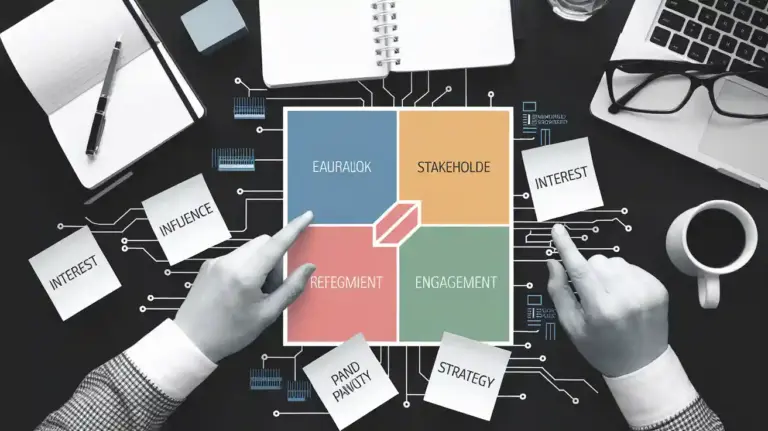Are you feeling overwhelmed and exhausted by the constant changes happening in your workplace? Do you find yourself struggling to keep up with the new policies, procedures, and technologies being implemented? If so, you may be experiencing change fatigue.
Change fatigue is a state of mental and emotional exhaustion caused by prolonged exposure to change. It’s a common phenomenon in today’s fast-paced business environment, where organizations are constantly adapting to stay competitive.
But change fatigue can have serious consequences, including reduced productivity, increased stress and burnout, and resistance to future changes. In this article, we’ll explore the impact of change fatigue, identify the signs to watch out for, and provide practical strategies for tackling it.
Understanding the Impact of Change Fatigue
Feeling exhausted and overwhelmed by too much change can have a significant impact on your productivity and well-being. When you experience change fatigue, it can lead to a lack of engagement and motivation. You may feel like you’re just going through the motions or that you can’t keep up with the changes happening around you.
This can also lead to increased stress and anxiety, which can have negative effects on your mental and physical health. The impact of change fatigue can be felt not only by individuals but also by organizations. When employees are experiencing change fatigue, it can lead to decreased productivity, increased absenteeism, and higher turnover rates.
This can be costly for organizations and can ultimately affect their bottom line. It’s important for organizations to recognize the signs of change fatigue and take steps to address it. There are coping mechanisms that can help individuals and organizations manage change fatigue.
For individuals, it’s important to take breaks and prioritize self-care. This can include things like getting enough sleep, exercise, and spending time with loved ones. Organizations can also provide support by offering resources like counseling services or employee assistance programs. Additionally, communication and transparency can help employees feel more informed and engaged in the changes happening around them.
By recognizing the impact of change fatigue and taking proactive steps to address it, individuals and organizations can better manage change and promote well-being.
Identifying the Signs of Change Fatigue
You may be experiencing the tell-tale signs of change fatigue, so it’s important to know the warning signals in order to prevent burnout and keep the ball rolling smoothly. Remember, a stitch in time saves nine!
One of the most obvious signs of change fatigue is a general feeling of exhaustion and stress. You might find yourself feeling more irritable, anxious, or overwhelmed than usual, or you might be experiencing physical symptoms like headaches, stomach aches, or trouble sleeping. Paying attention to these signals can help you take action to address the root causes of your fatigue before they lead to burnout.
Another common sign of change fatigue is a decrease in productivity or motivation. When you’re feeling overwhelmed and stressed, it can be difficult to stay focused and engaged in your work. You might find yourself procrastinating more than usual, or struggling to complete tasks that used to come easily to you. This can lead to a vicious cycle of stress and decreased productivity, which can be difficult to break out of.
By recognizing the signs of change fatigue early on, you can take steps to manage your stress levels and stay motivated, even when faced with difficult or uncertain situations.
Preventing burnout and managing stress levels is key to avoiding change fatigue. One effective strategy is to take regular breaks throughout the day to recharge and refocus. This might mean taking a walk, practicing deep breathing exercises, or simply stepping away from your desk for a few minutes.
Additionally, make sure to prioritize self-care activities like exercise, healthy eating, and getting enough sleep. By taking care of your physical and emotional needs, you’ll be better equipped to handle the challenges that come with change and avoid burnout in the long run.
Strategies for Tackling Change Fatigue
Let’s explore some helpful tips for overcoming the exhaustion and stress that can come with navigating through times of significant change. Change fatigue can be a challenging experience, but there are ways to manage it and come out stronger on the other side. Here are some strategies you can use to tackle change fatigue:
- Prioritize employee engagement: One of the most important ways to combat change fatigue is by keeping your employees engaged and involved throughout the change process. This means communicating frequently and clearly about what’s happening and why, and giving employees opportunities to provide feedback and ask questions. By keeping your team in the loop and making them feel valued and supported, you can help them stay motivated and committed even during times of uncertainty.
- Use effective communication techniques: Communication is key when it comes to managing change fatigue. To keep your team engaged and focused, consider using techniques like active listening, empathy, and transparency. Encourage open dialogue and feedback, and be willing to adjust your approach based on what you hear. By communicating effectively and authentically, you can build trust and foster a sense of unity and purpose among your team.
- Focus on the positive: Change can be hard, but it can also be an opportunity for growth and transformation. To help your team stay motivated and focused, try to focus on the positive aspects of the change and the potential benefits it can bring. Celebrate successes along the way, and be sure to acknowledge the hard work and dedication of your team. By staying positive and looking for opportunities to learn and grow, you can help your team stay energized and engaged even in the face of significant change.
Managing change fatigue can be challenging, but by prioritizing employee engagement, using effective communication techniques, and focusing on the positive, you can help your team navigate through times of change with resilience and success.
Remember, change is inevitable, but with the right strategies in place, you can help your team adapt and thrive.
Building Resilience in Times of Change
Building resilience during times of change can be challenging, but it’s important to prioritize strategies that promote employee engagement, effective communication, and a positive outlook.
One way to build resilience is through resilience training, which can help employees develop coping mechanisms and problem-solving skills. Resilience training can also help employees recognize and manage stress, which is a common side effect of change fatigue.
Another important strategy for building resilience is self-care practices. Encouraging employees to take care of their physical and mental health can help them better handle the challenges that come with change. This can include taking breaks throughout the day, getting enough sleep, and engaging in activities that promote relaxation and stress relief.
Employers can also consider offering wellness programs or resources to support employees in their self-care efforts.
Overall, building resilience during times of change requires a proactive and supportive approach. By prioritizing employee engagement, effective communication, and a positive outlook, while also offering resilience training and promoting self-care practices, employers can help their employees navigate change with greater ease and adaptability.
This can lead to increased productivity, job satisfaction, and overall well-being for employees.
Creating a Supportive Environment for Change Management
Creating a supportive environment for change management can make all the difference in how your team handles the ups and downs of the workplace.
Team buy-in is crucial for any change to be successful, and it’s your job as a leader to ensure that your team is on board with the changes. You can achieve this by involving them in the decision-making process and asking for their input.
When your team feels valued and heard, they are more likely to support and embrace the changes. Communication techniques are also vital in creating a supportive environment for change management.
You need to be transparent about the changes and communicate them clearly to your team. Hold regular meetings to update them on the progress and answer any questions they may have. Encourage open and honest communication and create a safe space for your team to express their concerns.
When your team feels heard and understood, they are less likely to resist the changes. Lastly, you need to lead by example.
Your team looks up to you, and your attitude towards the changes will influence theirs. Embrace the changes and show your team that you’re committed to making them work. Be patient and understanding, and don’t expect everyone to jump on board immediately.
Change takes time, and your team needs to know that you’re there to support them throughout the process. By creating a supportive environment, your team will be better equipped to handle change fatigue and come out stronger on the other side.
What Are the Signs of Change Fatigue and How Can Change Management Help Address It?
Change fatigue can manifest as decreased motivation, resistance to new initiatives, and low morale. Supporting change management strategies can help address this by providing clear communication, involving employees in decision-making, and offering support and resources to help navigate the transition.
Conclusion
Congratulations, you’ve made it to the end of this article on recognizing change fatigue and how to tackle it! By now, you should have a good understanding of the impact of change fatigue, how to identify its signs, and strategies for tackling it head-on.
But before you go, let’s address one anticipated objection: “I don’t have time to focus on building resilience. I’m too busy dealing with the changes.”
Firstly, it’s important to recognize that building resilience isn’t just about taking time out of your busy schedule. It’s about making small changes in your daily routine that can have a big impact on your overall well-being.
For example, taking breaks throughout the day, practicing mindfulness, and staying connected with your support network can all help build resilience.
Secondly, think about the long-term benefits of investing in resilience. By taking the time to build resilience, you’ll be better equipped to deal with future changes and challenges. You’ll be more adaptable, more confident, and more in control of your own life.
So, don’t let the busyness of your life hold you back from building resilience. Remember, small changes can make a big difference.
In conclusion, change is a constant in our lives, and change fatigue is a real phenomenon that can impact us all. But by recognizing its signs, implementing strategies to tackle it head-on, and building resilience, we can navigate through even the most challenging of times.
So, take a deep breath, stay positive, and remember that you’ve got this!





